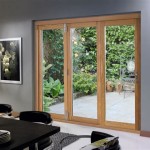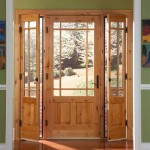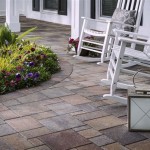```html
Creating A Beautiful Concrete Patio With Painting
Concrete patios offer a durable and versatile outdoor living space. However, their inherent grayness can sometimes feel bland and uninviting. Painting provides a relatively simple and cost-effective method to transform a plain concrete patio into a vibrant and aesthetically pleasing extension of the home. This article details the process of painting a concrete patio, emphasizing preparation, appropriate paint selection, and application techniques to achieve a long-lasting and visually appealing result.
Preparing the Concrete Surface
Proper surface preparation is paramount to a successful and durable paint job. Neglecting this step can lead to paint peeling, cracking, and premature failure. The preparation process involves cleaning, repairing, etching (if necessary), and priming the concrete surface.
The first step is thorough cleaning. Remove all loose debris, dirt, leaves, and other surface contaminants using a stiff broom or leaf blower. Following the initial sweeping, wash the patio with a pressure washer. This effectively removes embedded dirt and grime that a broom cannot reach. If a pressure washer is unavailable, a garden hose with a high-pressure nozzle and a scrub brush can be used as an alternative, although it may require more effort. For stubborn stains, such as oil or grease, use a degreaser specifically designed for concrete. Apply the degreaser according to the manufacturer's instructions and scrub the affected area thoroughly before rinsing with water.
After cleaning, inspect the concrete for any cracks, chips, or other imperfections. Small cracks (less than ¼ inch wide) can be filled with a concrete crack filler compound. Larger cracks may require a more substantial repair using a concrete patching compound. Follow the product instructions for application, ensuring the repair material is properly bonded to the existing concrete. Use a trowel to smooth the patched areas and allow them to cure completely before proceeding. For larger areas of spalling or crumbling concrete, consider consulting with a professional concrete contractor before proceeding with painting.
Evaluate the existing surface to determine if etching is required. Concrete surfaces are often inherently smooth, which can hinder paint adhesion. Etching creates a slightly porous surface that allows the paint to adhere more effectively. Perform a water bead test: pour a small amount of water onto the concrete surface. If the water beads up, the concrete is likely sealed or too smooth and requires etching. If the water soaks into the concrete, etching is not necessary. If etching is required, use a concrete etching solution, typically containing muriatic acid or phosphoric acid. Always wear appropriate safety gear, including gloves, eye protection, and a respirator, when working with etching solutions. Follow the manufacturer's instructions carefully for dilution and application. After etching, thoroughly rinse the concrete surface with water to remove all traces of the etching solution. Allow the concrete to dry completely before proceeding to the next step.
Finally, apply a concrete primer. Primer acts as a bonding agent, improving the adhesion of the paint to the concrete surface. It also helps to seal the concrete, preventing moisture from penetrating the paint film and causing it to peel or blister. Choose a primer specifically designed for concrete and compatible with the chosen paint. Apply the primer according to the manufacturer's instructions using a roller or brush. Allow the primer to dry completely before applying the paint.
Selecting the Right Paint
Choosing the correct type of paint is crucial for achieving a durable and long-lasting finish on a concrete patio. Not all paints are created equal, and using the wrong type can lead to premature failure, color fading, and other issues. The primary options for painting concrete patios are acrylic latex paint, epoxy paint, and concrete stain. Each type offers distinct advantages and disadvantages, and the best choice depends on the desired aesthetic, performance requirements, and budget.
Acrylic latex paint is a popular choice for concrete patios due to its ease of application, affordability, and wide availability. It offers good adhesion, durability, and resistance to UV damage. Acrylic latex paint is also relatively flexible, which helps to prevent cracking and peeling as the concrete expands and contracts with temperature changes. Look for acrylic latex paints specifically formulated for concrete floors or patios, as these typically contain additives that enhance their durability and resistance to abrasion. Consider adding a non-skid additive to the paint for increased safety, especially in areas prone to moisture.
Epoxy paint is a two-part coating system that provides exceptional durability and resistance to chemicals, stains, and abrasion. It is a good choice for high-traffic areas or patios that are exposed to harsh weather conditions. Epoxy paint creates a hard, glossy finish that is easy to clean and maintain. However, epoxy paint can be more challenging to apply than acrylic latex paint, as it requires precise mixing and application techniques. It also tends to be more expensive. Furthermore, epoxy paint can become brittle over time and may be prone to cracking if the concrete is not properly prepared.
Concrete stain, unlike paint, penetrates the concrete surface rather than forming a film on top. This results in a more natural-looking finish that will not peel or chip. Concrete stain is available in a wide range of colors and can be used to create various decorative effects, such as faux finishes or stenciled patterns. There are two main types of concrete stain: acid-based and water-based. Acid-based stains react chemically with the concrete, creating permanent color changes. They offer excellent durability and resistance to fading but require careful handling due to their corrosive nature. Water-based stains are more environmentally friendly and easier to apply. They offer good color saturation and durability but may not be as resistant to fading as acid-based stains. When choosing a concrete stain, consider the desired aesthetic, the level of durability required, and the ease of application.
Beyond the paint type, consider the sheen level. Matte finishes are good at hiding imperfections but can be more difficult to clean. Semi-gloss and gloss finishes are easier to clean but may highlight imperfections. A satin finish offers a good balance between these two extremes.
Applying the Paint for a Long-Lasting Finish
The paint application process significantly influences the final appearance and durability of the painted concrete patio. Proper application techniques, combined with the selected paint and thorough surface preparation, ensure a long-lasting and visually appealing result. This involves appropriate tools, applying thin coats, and allowing sufficient drying time between coats.
Gather the necessary tools and materials before starting the painting process. These typically include a paint roller with an extension handle (for reaching larger areas), a paint brush (for edging and detail work), paint trays, painter's tape (for masking off adjacent surfaces), and drop cloths (to protect surrounding areas). A concrete sealer may also be needed for the final coat, depending on the type of paint used. Ensure the roller nap is appropriate for concrete; a thicker nap will help to fill in the texture of the concrete.
Apply the paint in thin, even coats, avoiding drips and runs. Multiple thin coats are always preferable to a single thick coat, as they result in better adhesion, durability, and a more uniform finish. Start by painting the edges of the patio with a brush, carefully masking off any adjacent surfaces with painter's tape. Then, use a roller to paint the remaining areas, working in small sections at a time. Overlap each roller stroke slightly to ensure complete coverage. Allow each coat of paint to dry completely according to the manufacturer's instructions before applying the next coat. Typically, this requires at least 24 hours of drying time, depending on the temperature and humidity.
Typically, two coats of paint are sufficient to achieve good coverage and durability. However, for dark colors or high-traffic areas, a third coat may be necessary. After the final coat of paint has dried completely, consider applying a concrete sealer to further protect the painted surface from wear and tear, staining, and UV damage. Choose a sealer specifically designed for use over painted concrete and apply it according to the manufacturer's instructions. This will help to extend the life of the paint job and keep the patio looking its best for years to come.
Avoid painting in direct sunlight or during extremely hot or humid weather, as this can cause the paint to dry too quickly, leading to cracking and peeling. Choose a day with mild temperatures and low humidity for optimal results. Following these guidelines will result in a beautifully painted concrete patio that will enhance the outdoor living space and provide years of enjoyment.
```
How To Create Faux Tile Look On Concrete Patio Southern Hospitality
:max_bytes(150000):strip_icc()/painted-concrete-patio-1-2cb8e70c07074006b34800edbf090eba.jpg?strip=all)
19 Painted Concrete Patio Designs

Backyard Makeover How To Paint Concrete Look Like Oversize Pavers A House Full Of Sunshine

How To Create Faux Tile Look On Concrete Patio Southern Hospitality
:max_bytes(150000):strip_icc()/faux-painted-rug2-5d0d2b1a8ddd4c60a39ffd329840874e.jpg?strip=all)
19 Painted Concrete Patio Designs

Before And After Painted Concrete Patio Thistlewood Farm

How To Stain Stencil A Concrete Patio

10 Painted Concrete Patio Floor Ideas So Much Better With Age

How To Diy Concrete Garden Slab Stencilling Home Ideology

The Solution To Decorating Concrete Patios Porches
Related Posts








